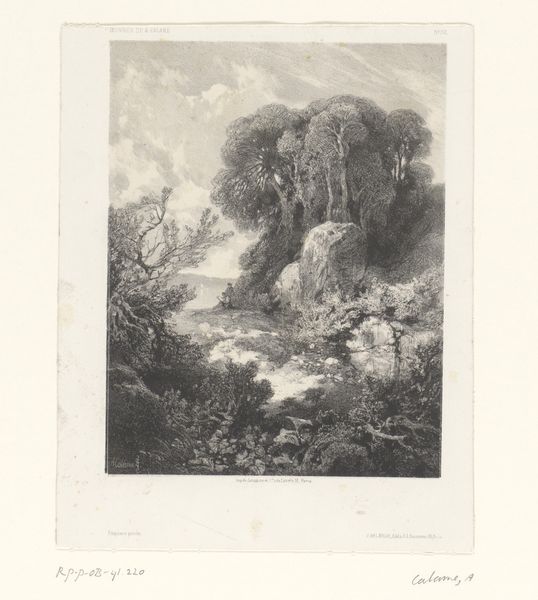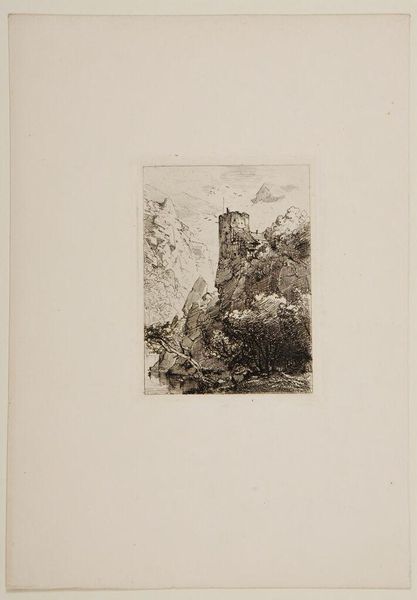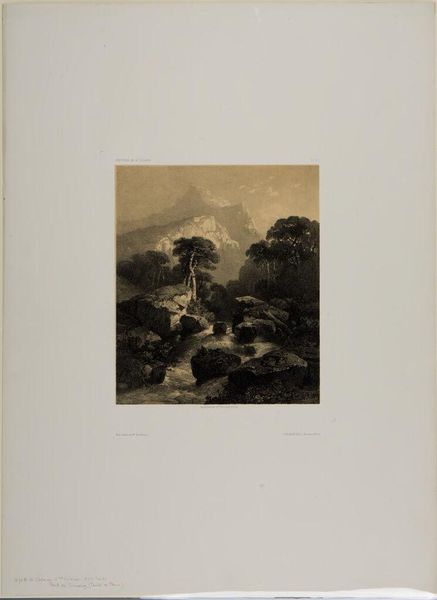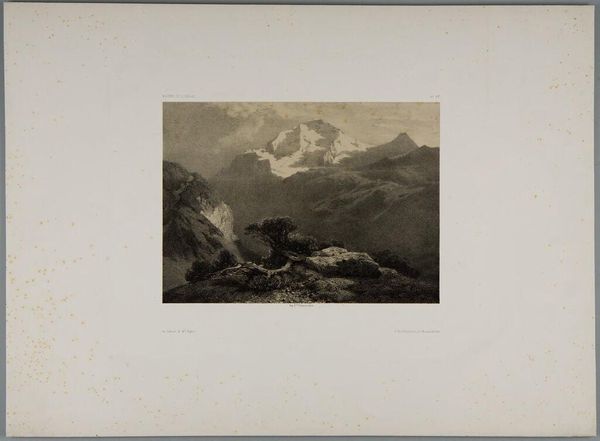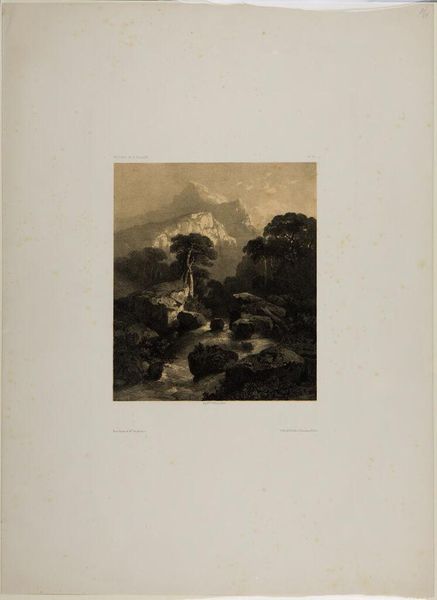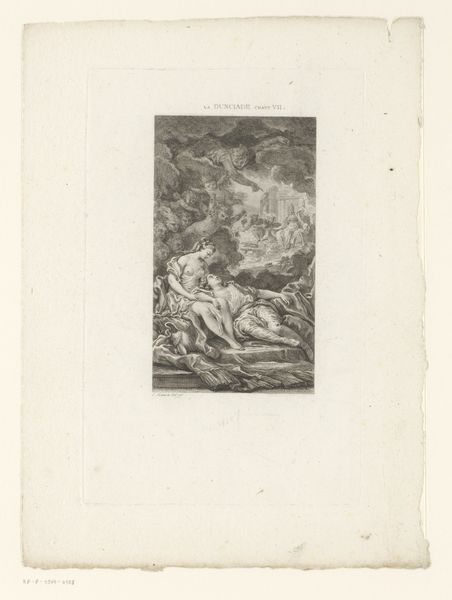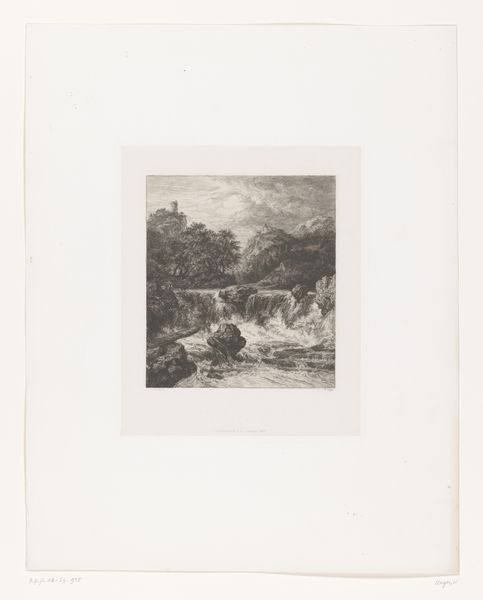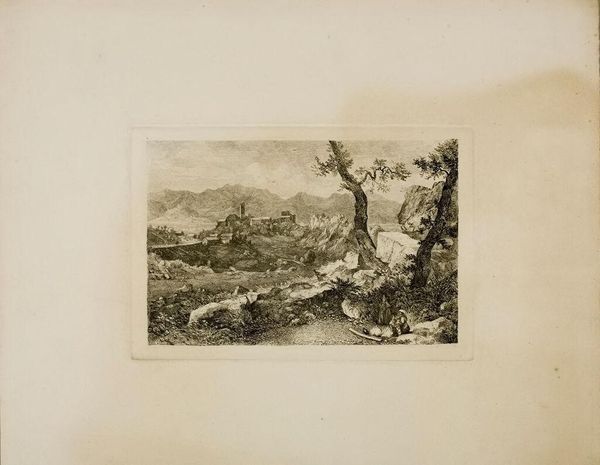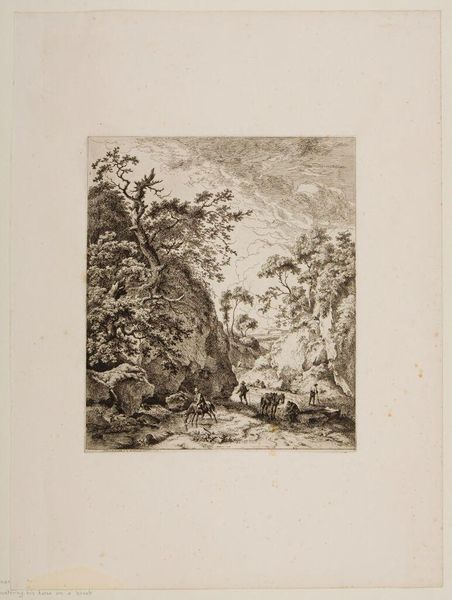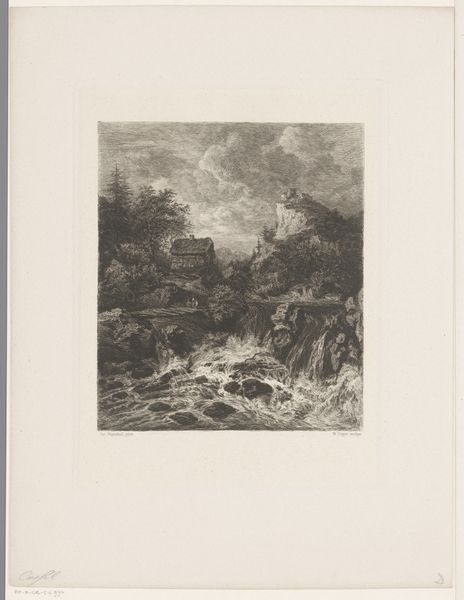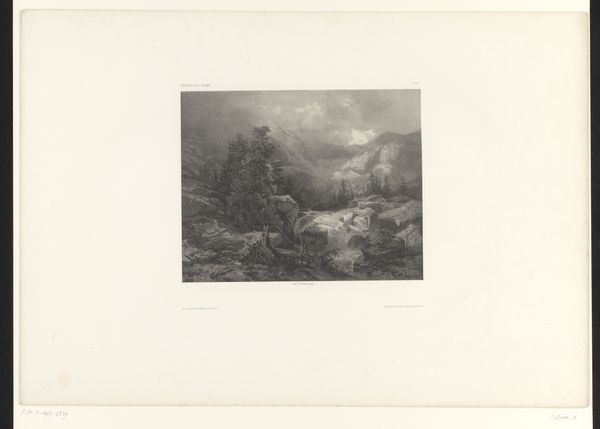
Copyright: CC0 1.0
Curator: I'm struck by the composition here. The stark contrast between light and shadow creates a dramatic, almost theatrical effect. Editor: This is Alexandre Calame's "Landscape Number 52," now residing at the Harvard Art Museums. Calame, active in the 19th century, often depicted nature as a powerful, sublime force, reflecting the Romantic movement's fascination with the untamed. Curator: The gnarled trees seem to claw at the sky, while the torrent of water rushes through the scene, almost erasing any sense of human presence. It speaks to nature's indomitable will. Editor: Yes, and understanding the historical context, we know that such landscapes were often read as allegories for human struggle and resilience against overwhelming odds, given the backdrop of social and political upheaval at the time. Curator: The density of the marks, the tight hatching and cross-hatching, certainly adds to that feeling of compression, of being overwhelmed. It's quite powerful how he uses those formal elements to build that mood. Editor: Indeed, and considering how industrialization was rapidly changing the landscape, Calame's romanticized visions offered a powerful counter-narrative. Curator: A potent reminder that art is never truly separate from the world around it. Editor: And that close analysis of form and context can reveal deeper meaning.
Comments
No comments
Be the first to comment and join the conversation on the ultimate creative platform.

